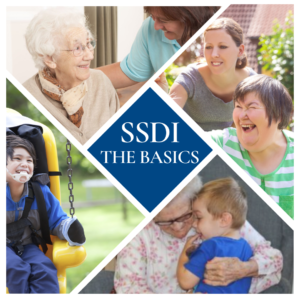 Social Security Disability Insurance (SSDI) is one of the major federal programs that provides monetary assistance to people with disabilities. Unlike some other programs for people with disabilities (like Supplemental Security Income (SSI), an SSDI recipient can qualify for benefits no matter how much money they have and, in many cases, no matter how much they earn. Although the lack of strict financial standards makes SSDI benefits easier to manage once they are obtained, not everyone with a disability can qualify for SSDI, so it pays to know the rules before filing an application for benefits.
Social Security Disability Insurance (SSDI) is one of the major federal programs that provides monetary assistance to people with disabilities. Unlike some other programs for people with disabilities (like Supplemental Security Income (SSI), an SSDI recipient can qualify for benefits no matter how much money they have and, in many cases, no matter how much they earn. Although the lack of strict financial standards makes SSDI benefits easier to manage once they are obtained, not everyone with a disability can qualify for SSDI, so it pays to know the rules before filing an application for benefits.
Disability & Benefits
SSDI is available to any worker who has a “disability” as defined by the federal government and who has paid into the Social Security system for a specified amount of time, depending on their age (for details, click here.) In order to qualify as “disabled,” an SSDI applicant must show that he/she is almost completely unable to work at any job whatsoever. The applicant must have a physical or mental impairment that makes it impossible for him to engage in any “substantial gainful activity,” and this impairment must be expected to last for longer than one year or to result in death. If an applicant is able to engage in substantial gainful activity, then he/she will typically not be eligible for SSDI. The Social Security Administration generally defines “substantial gainful activity” as being able to earn more than $1,260 a month (in 2020) from working. This income restriction applies only to income earned by working; an applicant can receive any amount of unearned income from any source other than working and still qualify for SSDI. How much the SSDI benefit will be depends on the beneficiary’s income before he became disabled, the size of his family, and the amount he paid into the Social Security system.
Qualifying on a Parent’s Work Record
Most people who sustain a serious disability before turning 22 are not able to assemble the necessary work record to qualify for SSDI on their own, but they may qualify for benefits on a parent’s work record instead. In order to qualify for SSDI in these situations, an applicant’s disability must have manifested itself before the applicant turned 22, the applicant must be completely disabled, his parent must have paid into the Social Security system for the required number of quarters and the parent must be either dead, permanently disabled, or receiving Social Security retirement benefits. In these cases, the person with the disability receives an SSDI benefit in addition to the Social Security benefits that his parent is collecting.
SSDI Beneficiaries Receive Medicare . . . Eventually
Although most people think of Medicare as health insurance for older Americans, SSDI recipients also qualify for Medicare benefits. Unfortunately, under current federal law almost all SSDI recipients must wait two years from the date that they become eligible for SSDI before they can begin to receive Medicare (this restriction does not apply to people who have ALS or who require dialysis for end-stage renal disease). If a person with a disability is no longer working, it may be difficult or impossible for her to obtain health insurance during this waiting period, which could lead to life-threatening consequences. Although some SSDI recipients with lower incomes may qualify for Medicaid, a large number of SSDI recipients go without health insurance during this waiting period. Over the years, Congress has attempted to rectify this problem, so far without success.
Re-Starting Work Does Not Immediately Cause a Loss of Benefits
Because SSDI applicants must not be able to engage in substantial gainful activity, many SSDI recipients may be reluctant to move back into the workforce for fear that they will immediately lose their SSDI benefit. Fortunately, the Social Security Administration offers a program called Ticket to Work that allows an SSDI to begin working again without a loss of benefits. Under the Ticket to Work program, when an SSDI recipient earns more than $910 a month (in 2020), she triggers the start of a “trial work” period, which lasts for five years. During this “trial work” period, the SSDI recipient can earn more than $910 a month for eight more months (and these months need not be consecutive). Once the SSDI recipient has used up her nine total trial work months, she will not receive an SSDI benefit in any additional month during which she engages in substantial gainful activity, i.e., when she makes more than $1,260 a month.
Although SSDI may seem complicated, it is actually a fairly easy program to navigate once an applicant is approved because there are no asset limits and a recipient can have unlimited unearned income. Your special needs planner will guide you though the application process and can help you manage your SSDI benefits so that they do not compromise any other assistance you may receive.

Recent Comments